|
Through my literacy consulting work, I frequently get asked by educators around the country for insights on how they can receive funding to implement a literacy initiative or project. While I will continue to respond individually to educators who reach out via email or this website's contact form, I wanted to share some highlights here. Having worked in rural, Title I, and suburban districts, I understand the need for literacy funding and have written and received several grants allowing me to impact literacy development. My hope is the information below helps educators begin their grant writing journey. Be sure to check with your school district and administrator before applying for grant funding as some districts may have an internal process and checkpoints you must follow. Funding Sources (not an exhaustive list):
Award/Recognition Options: Tips:
If you have additional questions or need for consulting services, feel free to reach out using the contact form. Best of luck! Are there grant programs you would like to see added to this list? If so, add a comment and/or complete the contact form and I will add them.
0 Comments
A PLC (Professional Learning Community) in my building was looking for an engaging way for students needing extra reading practice to get support from adults in our building. To support this, I created monthly "Read Around the Building" pages students can use to celebrate how often they are reading to adults in our building. Reading practice might include trade books, sight word 5x5 lists, poetry, short passages, or anything else the teacher finds appropriate for each student.
If you would like a copy of any, or all, of these pages, let me know. My building has been working on building student number sense, and specifically using Number Talks. Number Talks are the work of Ann Dominick and Sherry Parrish and have hand signals that students use as they mentally solve problems. To support classroom implementation, I created the posters shown below. I also used these posters as I modeled number talk lessons in K-5 classrooms. During a recent book talk to a 4th grade classroom, I shared one of my favorite books. I also used my new Merge Cube. I had been looking for ways teachers can incorporate Merge Cubes and augmented reality into their classrooms, and the book talk was a great way to start! I created a template on Google Slides and then imported the png files into CoSpaces. The process was easy and students loved seeing the Merge Cube. If you would like a copy of my Book Talk Summary template, or need support in using Merge Cubes in your classroom or school, please let me know!
I have used Skype in the Classroom for years and love the opportunities it provides teachers and learners. Recently, I came across Skype in the Classroom's 2018-2019 calendar. Each month has a specific focus and I love that February will be focused on literacy! You can even download Classroom Bingo cards for your students to keep track of their experiences! A few ways I have used Skype to connect students with other classrooms (Mystery Skype, Mystery Number, Mystery Reader, Poetry Slam), to bring in authors (Caroline Starr Rose, Irene Latham, Jonathan London); experts (Rick Swartz); and special guests (Scott Hamilton, Al Roker, Willie Geist, Jonathan Tait, and several other Olympians); and support a building-wide book study (Dave Burgess). If you haven't used Skype in the Classroom, I highly recommend you give it a try! By taking time to breakdown the walls of your classroom, you'll be providing students with learning opportunities and authentic audiences.
If you would like support, don't hesitate to reach out. 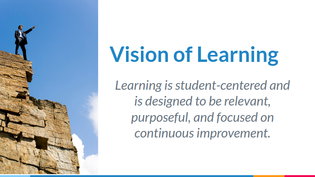 This summer I had the opportunity to share my vision of learning with educators and administrators, and I wanted to develop a visual way to represent what I was sharing. Throughout my eleven years in education, students have remained the focus of my work and my vision of learning. As I brainstormed how to visually communicate my vision, I kept coming back to Steve Barkley's change model, and decided to adapt it to convey my vision of learning. As you can see in the model above, everyone from the student to the community has an impact on student learning. The direct impact may lessen the further you are away from the center, but the sphere of influence is greater. Let's look at each section and how they impact student learning and are included in my vision of learning: 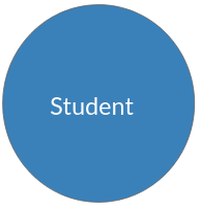 Student: -Actively involved in learning -Sets goals -Monitors and reflects on progress 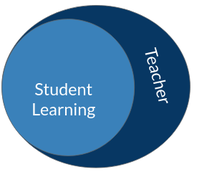 Teacher: -Meets the needs of all learners -Develops and nurtures positive relationships -Inspires success
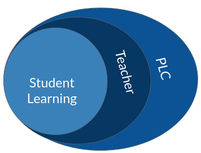 PLC: -Focused on “ALL” -Collaborative Culture -Goal Setting -Collective Commitments  Building Leadership: -Focused on “ALL” -Culture and Climate -Transparency -Systems and Processes
-Goal Setting  District Leadership: -Focused on “ALL” -Collaborative Culture -Curriculum -Transparency  Community: -Partnerships -Family Engagement -Community Engagement -Dept. of Ed -Tell our Story The adage "It takes a village" is far from an understatement, and should be ingrained in the culture and climate of a school. As an educator, I cannot imagine doing the work without each of these circles being represented. It isn't always easy, but if we are truly focused on students and student learning, then we all must work together. What is your vision of learning? How has it changed through your educational career? How would you visually represent your vision?
Literacy Breakout Edu's are one of my favorite uses of game based learning. I've been creating Breakout Edu's over different novels and this one is tied to the book Restart by Gordon Korman. Let me know if you would like a copy of this Breakout, or any of the other ones I've created. Literacy Breakout Edu over Restart by Gordon KormanGame Name: Restart Game Designer: Stephanie Laird @LairdLearning, LairdLearning.com Content Areas: Reading Recommended Ages: 3rd-6th grade Ideal Group Size: Whole Class Suggested Time: 30-40 minutes Story: While recording Brenden’s newest viral video idea, “Dog Walker in Rollerblades,” the group came across a box with several locks. Wondering what was inside, Chase and Brenden wanted to solve the clues, but realized video club was about to begin, and they have 10 dogs to return! Can you help Chase and Brenden by solving the clues and unlocking the box before they return? You have 30 minutes to unlock the box. Your time starts now. Lock Combinations:
Setup Instructions:
Reflection Questions:
Additional Requirements:
CCSS: RL.1, RL.2, RL.3 This Breakout Edu is over the book Out of My Mind by Sharon M Draper. Let me know if you would like a copy of this Breakout, or any of the other ones I've created. Literacy Breakout Edu over Out of My Mind by Sharon M DraperGame Name: Out of My Mind Game Designer: Stephanie Laird @LairdLearning, LairdLearning.com Content Areas: Reading Recommended Ages: 3rd-6th grade Ideal Group Size: Whole Class Suggested Time: 30-40 minutes Story: There’s an update for Melody’s Medi Talker, but her parents and Mrs. V are so busy helping Penny recover, they haven’t gotten around to installing the update. Rosie wants to help Melody, but needs your help in solving the clues and unlocking the box where the Medi Talker is stored. Will you help? The bus comes to pick up Melody and Rosie in 30 minutes, so time is running out! Work together, problem solve, and use what you learned in Out of My Mind! Your time starts now. Lock Combinations:
Setup Instructions:
Reflection Questions:
CCSS: RL.1, RL.2, RL.3  As part of my district's TIME (Teacher Initiated Meaningful Engagement) Day, I read the article Addressing Unintended Instructional Messages About Repeated Reading by Doug Fisher and Nancy Frey which was featured in the 2018 Jan/Feb issue of The Reading Teacher. In the article, Fisher and Frey begin by sharing what educators are doing to discourage rereading and repeated reading. They then discuss four things educators should do to foster rereading:
Reading this article allowed me to reflect on my journey as an educator, the literacy practices I've seen (and a few I employed when I first entered the profession), and what I can do to make sure we are implementing instructional practices that convey why reading (and literacy as a whole) are critical skills. My favorite quote came at the end of the article: "Our charge as educators is to apprentice students into the reading world. That means we must ensure that our words and actions provide that invitation every day." What are you doing to meet this charge? This year, my building is renewing our focus on PBIS (Positive Behavioral Interventions & Support), and in addition to individual tickets and incentives, we are adding in a classroom component through classroom tickets. I created the design below, which will be printed and made into notepads, for teachers and staff to hand out when the see an entire classroom demonstrating the RAMS Way (Respectful, Always Responsible, Manners, and Safety). I look forward to seeing the tickets be incorporated into our PBIS practices and through my capacity as an Instructional Coach, to continue to support teaching and learning.
|
Archives
April 2020
Categories
All
|
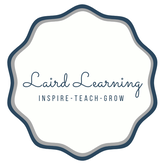
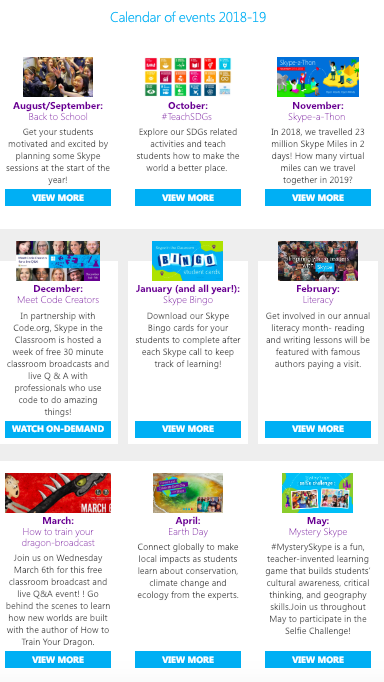
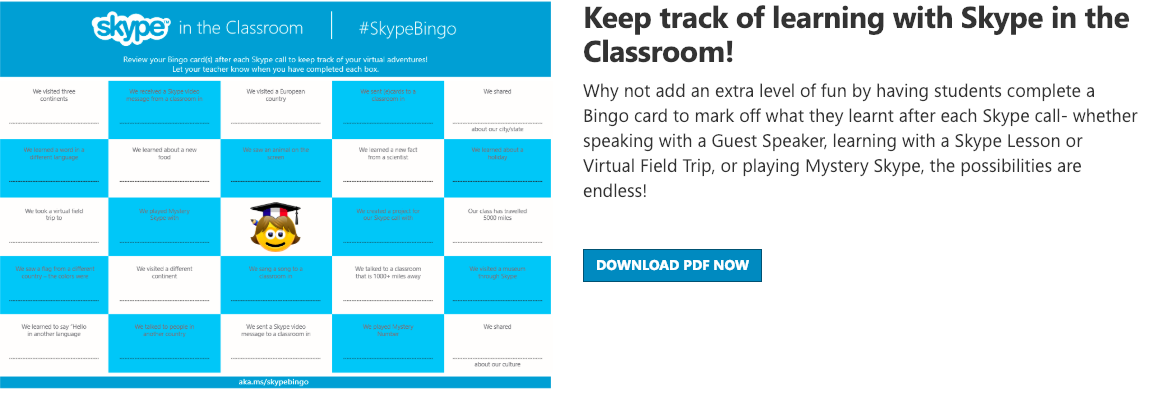
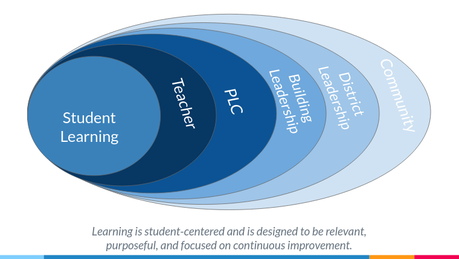
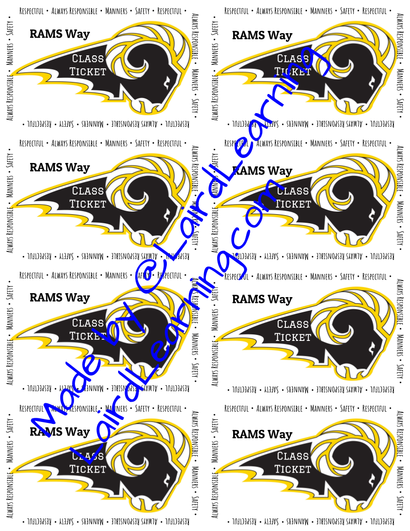
 RSS Feed
RSS Feed
